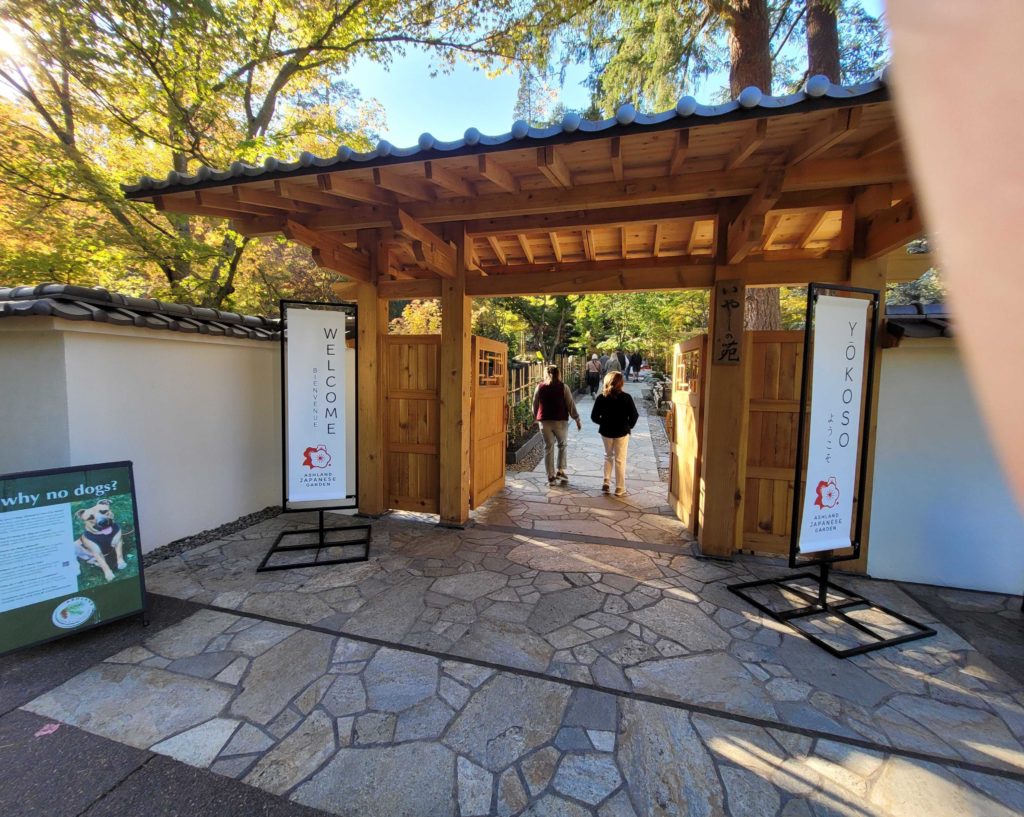Lithia Park houses Ashland’s Japanese garden, which had its grand opening just a couple of weeks ago on October 22nd, 2022. The garden designer is Toru Tanaka, a Japanese man who specializes in designing Japanese gardens, as he has created other Japanese gardens in larger cities like Portland and Chicago.
The origins of Ashland’s Japanese garden in its new form can be traced back to 2015 when Ashland resident Béatrice Marechal passed away. Her widow, Jeff Mangin, and relatives in France decided to give Ashland’s Park’s Foundation a grant of 1.3 million dollars to build a new authentic Japanese garden. Plans began in 2017, with Tanaka coming on board to design and construct it, lasting from 2020 to 2022 and opening in October 2022.
The garden opens at dusk and closes at dawn. The garden contains ten different areas, each modeled after a Japanese garden. Just outside the gate, you will be walking on material for landscaping, known as flagstone, right outside its entrance. Outside the gate is the welcome center, where a volunteer for the garden is willing to answer any questions, you may have about the garden. The gate is by William Olsen Designs, located in Phoenix, Oregon, and follows a traditional Japanese architectural style.
Past the gate is the path. Ashland’s Japanese Garden follows the authentic tradition of Japanese gardens by having its path in A-symmetry design. Everything you see in the garden in terms of its route is counterclockwise and has various long material paths you will walk on, from flagstone, sand, stone, and even a wooden deck.
Within the garden, there are various plants and plants, some of which are over a hundred years old. For example, boy scouts planted the large grove of Douglas Firs in 1916. According to Ashland Japanese Garden’s website, these trees are supposed to represent an unbreakable spiritual connection in all things inside and outside the garden. There is also the Bamboo forest; in Japan, Bamboo’s supposed to be a symbol of both new beginnings and good luck in general, as well as a reminder to gain wisdom by giving up our sense of preconceived notions.
Water is also through the center and front left corners of the garden. A creek with flowing water represents a natural passage of time as it flows into the pond at the end of its path. The garden hopes that they can soon bring in Koi Fish to live in the pond. Koi Fish are an everyday breed of fish from parts of Asia and, in Japanese culture, can represent things like strength, persistence, courage, patience, and success. Within the creek and pond also lies a waterfall and features two water streams that will merge into one and connect the creek to the pond. It symbolizes purity and can be seen as a moment stuck in time.
Then there is the deck, facing and even covering the pond. It’s entirely ADA accessible and large enough for multiple small groups, and guests are more than welcome to do yoga or meditate on the deck from looking at the garden. We talked with some volunteers that even mentioned that if they get enough community, there are plans to expand by introducing a tea garden. You can see this in the early stages of planning, as multiple metal fences surround the garden with doors leading to the areas where those fences are covering.
During our visit to the Japanese garden, we had fun looking around and exploring every nook and cranny. It is in Lithia Park, just across from the tennis court. So next time you visit Lithia Park, stop by the garden.



